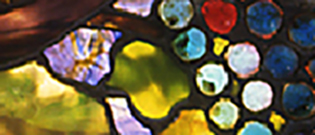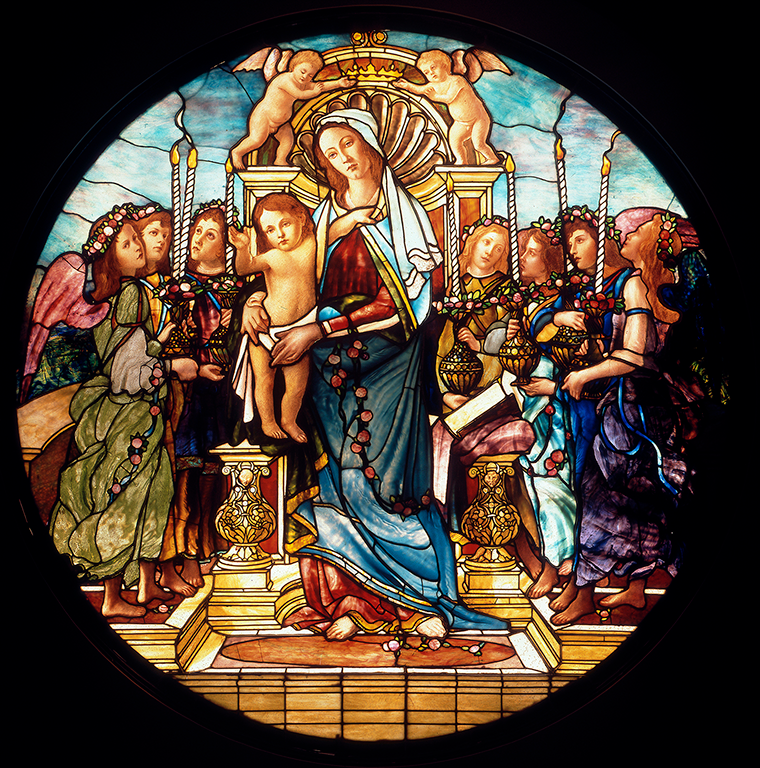This window by the Tiffany Glass Company (1885–92) is based on a painting by the Italian Renaissance artist Sandro Botticelli (c. 1445–1510), which was destroyed in Berlin in 1945. Seven feet in diameter, the window features ribbons of iron bent around the figures to give the window its structural support while sparing distraction from saddle bars.
The figures in the window celebrate the idea of mercy and adoration in the recently born Christ. The Madonna’s vibrant red and blue gown is just one example of Tiffany’s superiority in creating richly colored opalescent glass. The angel’s green robe on the left is a rare example in the Morse collection of Tiffany’s “reverse painting technique.” This involves applying paint to the back side of the drapery glass’s surface.
By presenting this window at the 1893 World’s Columbian Exposition in Chicago, in connection with the chapel interior, Louis Comfort Tiffany (1848–1933) asserted that his studios could make windows that ranked with the most revered artworks of history while exhibiting his glass techniques. This brilliant marketing strategy helped Tiffany promote his business to the 19th-century global marketplace.
Window
Madonna and Child window, c. 1890
Exhibited: World’s Columbian Exposition, Chicago, 1893
Leaded glass Tiffany Glass Company, New York City, 1885–92 D. 84 in. (74-018)



